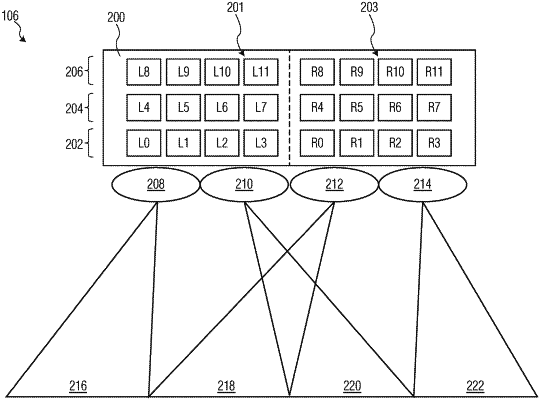| CPC E05F 15/74 (2015.01) [G01V 8/20 (2013.01); E05F 2015/435 (2015.01)] | 14 Claims |

|
1. A door sensor, comprising:
a plurality of emitters arranged in multiple rows, each emitter of the plurality of emitters configured to emit an emission beam comprising IR light during an emitting phase;
one or more lenses comprising refractive elements, the one or more lenses configured to form an IR pattern on a surface by:
duplicating the emission beam of each emitter to form a first duplicated beam and a second duplicated beam,
directing the first duplicated beam to a first reception area of a plurality of reception areas on the surface, and
directing the second duplicated beam to second reception area of the plurality of reception areas on the surface;
a plurality of receptors arranged in multiple rows, each receptor of the plurality of receptors configured to receive a reception beam from a corresponding reception area of the plurality of reception areas on the surface, the corresponding reception area comprising two duplicated beams, each from different emitters, and the reception beam comprising one or more of the two the duplicated beams reflected from the surface during a listening phase;
the plurality of receptors further configured to receive an interference beam transmitted from an adjacent door sensor during the listening phase; and
a controller operatively coupled to a memory storing computer-readable instructions that, when executed by the controller, cause the controller to:
determine one or more of a frequency and a phase of the interference beam,
determine whether the emitting phase of the door sensor should take precedence over the transmission of the interference beam by the adjacent door sensor, and
adjust a timing of one or more of the emitting phase and the listening phase to reduce interference from the interference beam of the adjacent door sensor.
|